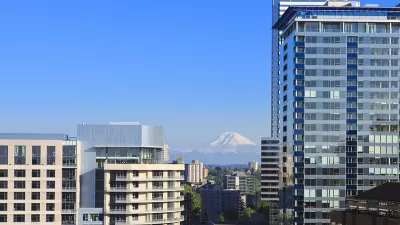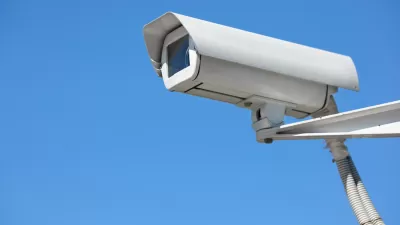For six years, New Orleans police have been using a secret program that uses social media to locate violent criminals.

A program from Peter Theil's Palantir has been used by New Orleans cops for six years to try to predict which people are likely to have been involved in violent crimes. The program may have been controversial, but it was unknown to the public until a report published in The Verge uncovered its use. "The program, like a similar program in Chicago, pulls information from a variety of law enforcement databases and social media networks, and draws up a list of people most likely to be involved in violent crime," Tanvi Misra reports for CityLab.
If the existence of the Palantir program were public knowledge, civil rights advocates might have protested the possibility for automated discrimination. "Cities across the U.S. are adopting new surveillance technologies and algorithms without any public input or oversight," Misra writes. To address this the ACLU has been advocating for public hearings for these new technologies, so that citizens can have some say in how they are policed.
FULL STORY: The Local Movement to Curb Big Brother

Alabama: Trump Terminates Settlements for Black Communities Harmed By Raw Sewage
Trump deemed the landmark civil rights agreement “illegal DEI and environmental justice policy.”

Planetizen Federal Action Tracker
A weekly monitor of how Trump’s orders and actions are impacting planners and planning in America.

The 120 Year Old Tiny Home Villages That Sheltered San Francisco’s Earthquake Refugees
More than a century ago, San Francisco mobilized to house thousands of residents displaced by the 1906 earthquake. Could their strategy offer a model for the present?

In Both Crashes and Crime, Public Transportation is Far Safer than Driving
Contrary to popular assumptions, public transportation has far lower crash and crime rates than automobile travel. For safer communities, improve and encourage transit travel.

Report: Zoning Reforms Should Complement Nashville’s Ambitious Transit Plan
Without reform, restrictive zoning codes will limit the impact of the city’s planned transit expansion and could exclude some of the residents who depend on transit the most.

Judge Orders Release of Frozen IRA, IIJA Funding
The decision is a victory for environmental groups who charged that freezing funds for critical infrastructure and disaster response programs caused “real and irreparable harm” to communities.
Urban Design for Planners 1: Software Tools
This six-course series explores essential urban design concepts using open source software and equips planners with the tools they need to participate fully in the urban design process.
Planning for Universal Design
Learn the tools for implementing Universal Design in planning regulations.
Clanton & Associates, Inc.
Jessamine County Fiscal Court
Institute for Housing and Urban Development Studies (IHS)
City of Grandview
Harvard GSD Executive Education
Toledo-Lucas County Plan Commissions
Salt Lake City
NYU Wagner Graduate School of Public Service





























